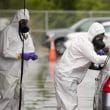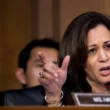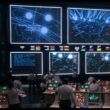Sharon Squassoni
July 15, 2015
The Vienna agreement with Iran (Joint Comprehensive Plan of Action, or JCPOA) is a lumbering, 159-page tome of historic dimensions. There is a certain irony to the painstaking attention to deadlines from a crew of negotiators who failed to meet most of the deadlines they have set in the last two years. Still, the level of detail, nuance, and overlapping obligations is impressive.
Some of the details are astonishing. Unlike most agreements (safeguards or other) related to peaceful nuclear energy use, this one specifies prohibited nuclear-weapons-related activities. While one worries about making public what we consider the most important nuclear weapons skills, the inclusion of this information is an important hook to allow the International Atomic Energy Agency (IAEA) to gain access to military sites, since access must be “exclusively for resolving concerns regarding fulfilment of JCPOA commitments.”
The nuances are also impressive. The JCPOA is absolutely silent regarding IAEA access to scientists, which reportedly was a sticking point (and banned under legislation by the Majlis, or Iranian parliament). Similarly, the agreement doesn’t obviously restrict IAEA access to military sites, but the multilayered review process for access by inspectors to verify the absence of activities inconsistent with the JCPOA is designed to let the Joint Committee (comprised of P5 + 1 and Iran) have the last word.
Perhaps most detailed are the overlapping obligations embedded in the implementation schedule. It is a Kabuki theater of actions and reactions among Iran, the European Union, the United States, the UN, and the IAEA. The most interesting part to watch comes first: Over the next 60 days, Iran and the IAEA will endeavor to resolve all the past concerns regarding Iran’s nuclear program. Only then can the rest of the show go on.
Sharon Squassoni
director and senior fellow, Proliferation Prevention Program
Center for Strategic and International Studies













